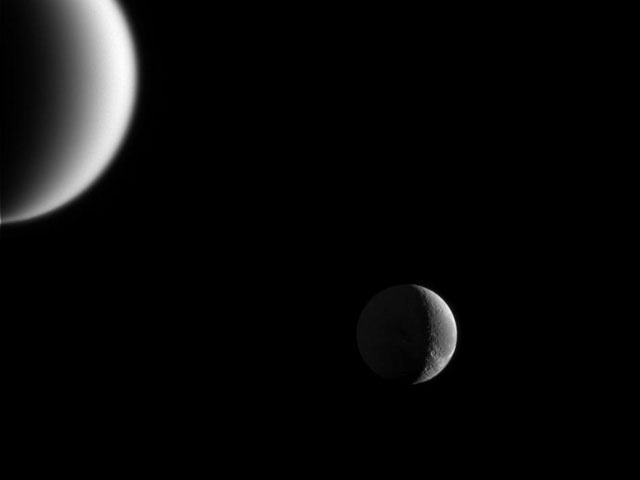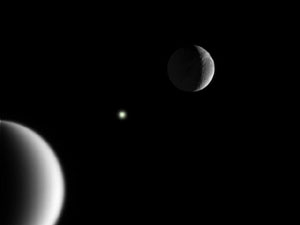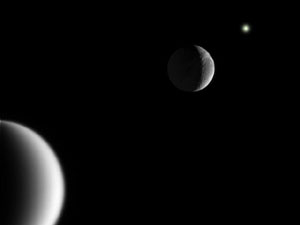Which moon is closer and which moon is further?

This image from the Cassini spacecraft shows the moons Titan bottom-left and Dione top-right.
Which moon is closer and which moon is further?

This image from the Cassini spacecraft shows the moons Titan bottom-left and Dione top-right.
To Do and Notice
Look at this image taken by the Cassini spacecraft. It shows the moons Titan at the bottom-left and Dione at the top-right in the same image.
Which moon appears to be closer to you, and which moon further away?
What's Going On?
What are the reasons that you think one moon is closer and the other further.
The eye and brain use many clues to discern distances to objects in an image.
Larger objects are often closer than smaller ones.
Distant objects have less resolution to their surface detail than closer ones.
Very close objects are often blurry because they too close to be brought into focus by the eye.
Objects at the bottom of an image are often closer than those near the top.
Objects that touch are often close together, so
since Titan touches the frame of the image it must be close to the
frame.
If Dione were closer it would then be between the frame and the
observer, which rarely happens in a photograph.
The Answer
Titan, the fuzzy moon at the bottom left is further away than Dione.
In this Image Titan is twice as far away as Dione, and Dione is 1/4 the diameter of Titan.
Titan is fuzzy not because it is out of focus, but because it has a dense hazy atmosphere.
Now that you know the answer can you force your eye and brain to perceive that Dione is closer than Titan?
Going Further
Use a photo processing program to change the above photo and notice what happens to the positions of the moons.
For example, flip the image top to bottom.

Now what is the apparent relative position of the moons?
Place a white dot about 1/10 the size of Dione half way between Titan and Dione on the line joining their centers, where does the dot appear to be.

Move the dot beyond Dione on the same line, where does it appear to be?

These dot placement activities were discovered by Don Rathjen.
|
Scientific Explorations with Paul Doherty |
|
29 March 2005 |